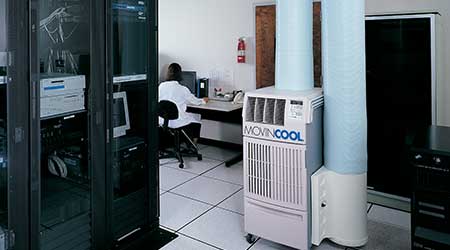No one wants to think about worst-case scenarios, but some people have no choice. Maintenance and engineering managers in institutional and commercial facilities have no choice when it comes to preparing for power or equipment issues that threaten the comfort of building occupants. In the case of hospitals, the problem can threaten occupant health, according to an article from Facility Maintenance Decisions on the FaciltiesNet website.
To plan effectively for emergency cooling or even temporary, event-related cooling, managers need to understand the cooling needs and resources of their facilities, as well as available portable cooling products and technology. Armed with this information, they can work with manufacturers and equipment dealers to keep facilities cool when it counts.
A new generation
The latest portable cooling equipment offers a range of updated features and functions that are designed to address the changing portable and emergency cooling needs of facilities. One set of produce advances the level noise the units generate — a key consideration given the locations that the units operate in.
“One thing we’ve been working on hard to change and improve is the sound of the units,” said Rafael Bombino with Rankin Group. “Some of the complaints have been that the units are noisy. These are mechanical systems, and there’s a fan or a blower in there, so they’re going to make some noise. But we’ve worked hard to make these units generally a little bit quieter and a little more efficient.”

 Building Sustainable Healthcare for an Aging Population
Building Sustainable Healthcare for an Aging Population Froedtert ThedaCare Announces Opening of ThedaCare Medical Center-Oshkosh
Froedtert ThedaCare Announces Opening of ThedaCare Medical Center-Oshkosh Touchmark Acquires The Hacienda at Georgetown Senior Living Facility
Touchmark Acquires The Hacienda at Georgetown Senior Living Facility Contaminants Under Foot: A Closer Look at Patient Room Floors
Contaminants Under Foot: A Closer Look at Patient Room Floors Power Outages Largely Driven by Extreme Weather Events
Power Outages Largely Driven by Extreme Weather Events